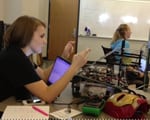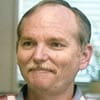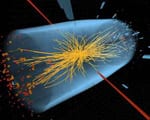“Power Plays” workshop, in Dallas May 19-20, is SMU Geothermal Laboratory’s seventh international energy conference and workshop
Southern Methodist University’s renowned SMU Geothermal Laboratory will host its seventh international energy conference and workshop on the SMU campus May 19-20. The conference is designed to promote transition of oil and gas fields to electricity-producing geothermal systems by harnessing waste heat and fluids from both active and abandoned fields.
More than 200 professionals – ranging from members of the oil and gas service industry, reservoir engineers, to geothermal energy entrepreneurs, to lawyers – are expected to attend “SMU Power Plays: Geothermal Energy in Oil and Gas Fields” Topics of discussion will include:
Power generation from flare gas Power generation from waste-heat and geothermal fluids Research updates on induced seismicity, as well as onshore and offshore thermal maturation Play Fairway Analysis – a subsurface mapping technique used to identify prospective geothermal resources Technology updates
Researchers from SMU’s Roy M. Huffington Department of Earth Sciences will present results from their Fall 2014 Eastern North American Margin Community Seismic Experiment (ENAM CSE) research. In addition, equipment such as one-well systems, desalination and other new technologies will be explored. SMU geothermal conference remains open and walk-up attendees will be accommodated.
SMU has been at the forefront of geothermal energy research for more than 45 years, and the Geothermal Laboratory’s mapping of North American geothermal resources is considered the baseline for U.S. geothermal energy exploration. Geothermal Laboratory Coordinator Maria Richards and Emeritus Professor David Blackwell have seen interest in geothermal energy wax and wane with the price of oil and natural gas.
But Richards believes current low oil prices will drive more interest in geothermal development, encouraging oil and gas producers to use geothermal production from existing oil and gas fields as they try to keep them cost-effective for petroleum production at 2015 prices.
The technology that will be examined at the conference is relatively straight-forward: Sedimentary basins drilled for oil and gas production leave behind reservoir pathways that can later be used for heat extraction. Fluids moving through those hot reservoir pathways capture heat, which at the surface can be turned into electricity, or used downhole to replace pumping needs. In addition, the existing surface equipment used in active oil and gas fields generates heat, which also can be tapped to produce electricity and mitigate the cost of production.
“Oil and gas drilling rig counts are down,” Richards said. “The industry has tightened its work force and honed its expertise. The opportunity to produce a new revenue stream during an economically challenging period, through the addition of relatively simple technology at the wellhead, may be the best chance we’ve had in years to gain operators’ attention.”
Featured speakers include Jim Wicklund, managing director for equity research at Credit Suisse, who will speak on “Volatile Economics in the Oil Field,” and Holly Thomas and Tim Reinhardt from the U.S. Department of Energy’s Geothermal Technologies Office. STW Water Process & Technology, a water reclamation and oilfield services company, will have desalination equipment on-site for attendees to understand size and scaling capacity of water purification for oil field operators.
Information and registration is available at www.smu.edu/geothermal. — Kimberly Cobb
Follow SMUResearch.com on twitter at @smuresearch.
SMU is a nationally ranked private university in Dallas founded 100 years ago. Today, SMU enrolls nearly 11,000 students who benefit from the academic opportunities and international reach of seven degree-granting schools. For more information see www.smu.edu.
SMU has an uplink facility located on campus for live TV, radio, or online interviews. To speak with an SMU expert or book an SMU guest in the studio, call SMU News & Communications at 214-768-7650.

 17 million-year-old whale fossil provides 1st exact date for East Africa’s puzzling uplift
17 million-year-old whale fossil provides 1st exact date for East Africa’s puzzling uplift SMU analysis of recent North Texas earthquake sequence reveals geologic fault, epicenters in Irving and West Dallas
SMU analysis of recent North Texas earthquake sequence reveals geologic fault, epicenters in Irving and West Dallas Bitcoin scams steal at least $11 million in virtual deposits from unsuspecting customers
Bitcoin scams steal at least $11 million in virtual deposits from unsuspecting customers Teen girls report less sexual victimization after virtual reality assertiveness training
Teen girls report less sexual victimization after virtual reality assertiveness training Women who are told men desire women with larger bodies are happier with their weight
Women who are told men desire women with larger bodies are happier with their weight Fossil supervolcano in Italian Alps may answer deep mysteries around active supervolcanoes
Fossil supervolcano in Italian Alps may answer deep mysteries around active supervolcanoes
 KERA, NOVA: SMU researcher Peter Weyand discusses the upper limits of human speed.
KERA, NOVA: SMU researcher Peter Weyand discusses the upper limits of human speed. The Undying Radio: Familiarity breeds content when it comes to listeners and music
The Undying Radio: Familiarity breeds content when it comes to listeners and music Mosquito indexing system identifies best time to act against potential West Nile Virus outbreaks
Mosquito indexing system identifies best time to act against potential West Nile Virus outbreaks Sweden, SMU psychologists partner to launch parenting program that reduces child abuse
Sweden, SMU psychologists partner to launch parenting program that reduces child abuse Chemical probe confirms that body makes its own rotten egg gas, H2S, to benefit health
Chemical probe confirms that body makes its own rotten egg gas, H2S, to benefit health Study: High-volume Bitcoin exchanges less likely to fail, but more likely to suffer breach
Study: High-volume Bitcoin exchanges less likely to fail, but more likely to suffer breach Musicians who learn a new melody demonstrate enhanced skill after a night’s sleep
Musicians who learn a new melody demonstrate enhanced skill after a night’s sleep Study finds that newlyweds who are satisfied with marriage are more likely to gain weight
Study finds that newlyweds who are satisfied with marriage are more likely to gain weight Fruit flies fed organic diets are healthier than flies fed nonorganic diets, study finds
Fruit flies fed organic diets are healthier than flies fed nonorganic diets, study finds Center for Creative Leadership to study innovative learning method of SMU Lyle School of Engineering
Center for Creative Leadership to study innovative learning method of SMU Lyle School of Engineering NOvA neutrino detector in Minnesota records first 3-D particle tracks in search to understand universe
NOvA neutrino detector in Minnesota records first 3-D particle tracks in search to understand universe Parenting program tackles child abuse and neglect among formerly homeless families
Parenting program tackles child abuse and neglect among formerly homeless families
 To book a live or taped interview with David Blackwell in the SMU
To book a live or taped interview with David Blackwell in the SMU 
 Human diabetes has new research tool: Overfed fruit flies that develop insulin resistance
Human diabetes has new research tool: Overfed fruit flies that develop insulin resistance
 Ancient tree-ring records from southwest U.S. suggest today’s megafires are truly unusual
Ancient tree-ring records from southwest U.S. suggest today’s megafires are truly unusual
 College students willing to donate genetic material to biobanks for research
College students willing to donate genetic material to biobanks for research Study: Nearly two-thirds of EU citizens are marginalized by English-language dominance
Study: Nearly two-thirds of EU citizens are marginalized by English-language dominance From ‘Green Card’ to ‘Thin Blue Line’: Lawtalk research looks at popular legal expressions
From ‘Green Card’ to ‘Thin Blue Line’: Lawtalk research looks at popular legal expressions Study: Most Texas ISDs that are teaching the Bible are skirting 2007 state law
Study: Most Texas ISDs that are teaching the Bible are skirting 2007 state law Study finds Jurassic ecosystems were similar to modern: Animals flourish among lush plants
Study finds Jurassic ecosystems were similar to modern: Animals flourish among lush plants